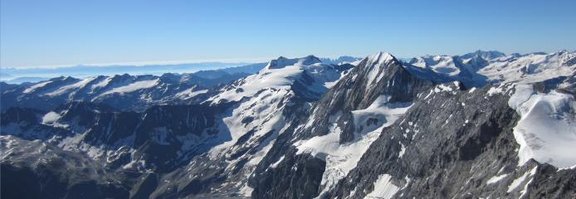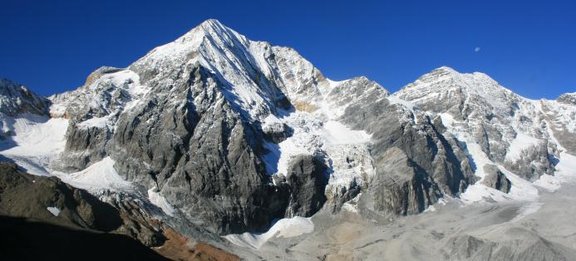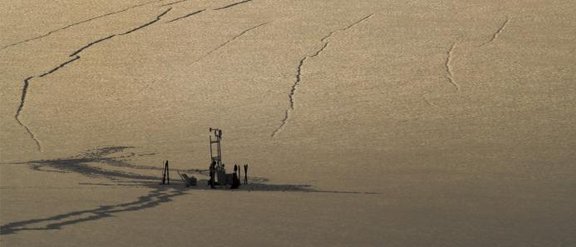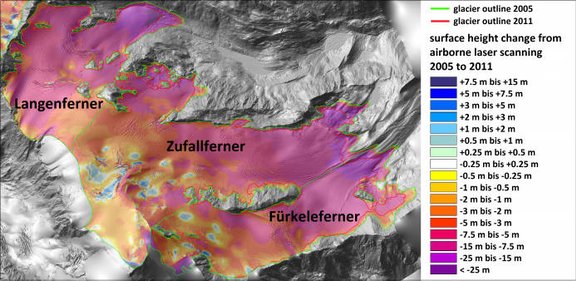A physically based regional mass balance approach for the glaciers of Vinschgau – glacier contribution to water availability

Introduction
Vinschgau is an inner-alpine dry valley in the Autonomous Province of Bozen, Northern Italy. It is surrounded by high, glaciated mountain ranges (Ötztal Alps in the North, Ortler-Cevedale Group in the South and the Silvretta, Sesvenna and Bernina Group in the West). This results in very low annual precipitation amounts of approximately 500 mm. The dominant economic activity in Vinschgau is fruit production which requires a considerable amount of water for irrigation, especially during dry periods in summer. The water for irrigation is exclusively provided by the river Etsch and its tributaries, most of which are fed to a certain part by glacier melt runoff.
Scope of the project
In order to evaluate the significance of glacier-induced runoff for the local hydrological resources of this region, a physically based regional mass balance model will be applied to simulate the spatial distribution of glacier mass changes in the region and to compute the glacier melt contribution to total river discharge at a high temporal resolution. Current changes in glaciation will be examined using new glacier inventories gained in the course of this project.

Methods
An airborne laser scanning (ALS) campaign will be carried out in order to derive high resolution digital terrain models (DTM) of all glaciers in the Vinschgau, and consequentially a new glacier inventory for the study region. This data will be used to validate a physically based regional glacier mass balance model (MBM). Furthermore, the DTM of the new glacier inventory will be compared to three existing inventories for the years 1983, 1997 and 2006 in order to investigate regional glacier changes during the recent decades.
An automatic weather station (AWS) will be installed at the surface of Langenferner, a well measured glacier within the study region. Meteorological data from this first on-glacier AWS in the region will be used to optimize MBM-parameterizations, as well as to derive methods for the extrapolation of meteorological data from existing off-glacier weather stations maintained by the Hydrographic Office of the Autonomous Province of Bolzano (HOB) to the glacier surfaces

A regional stake network of single ablation stakes on approximately twenty different glaciers will be set up within this project. Ablation data of these stakes will serve to investigate the different melt behaviour at various glaciers within the region, to calibrate the regional mass balance model and to validate the ALS derived results.

Project Leader:
Georg KASER
Members:
Galos Stephan
External Members:
Klug Christoph (Institute of Geography)
Funding Agencies:
Government of the Autonomous Province of Bozen
Project Duration:
01/01/2013 to 31/12/2015
